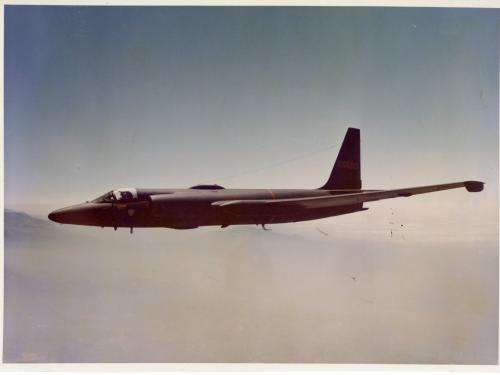1 Images
During the Cold War, this Hycon Model B panoramic camera was installed in the Lockheed U-2 reconnaissance aircraft displayed directly above it in the Looking At Earth gallery as an essential intelligence-gathering tool of the United States. In 1956, the Museum's U-2C (then a U-2A) equipped with this Model B camera made the first overflight of the Soviet Union. In 1962, another Model B camera in the collection provided positive proof of the existence of Soviet missiles in Cuba, precipitating a crisis that led the world to the brink of nuclear war.
As the world's premier high-resolution, high-altitude camera, the Hycon B camera (officially the 73B camera) enabled the United States to conduct routine reconnaissance in relative safety and to observe global hot spots in astonishing detail.The B camera had a 36-inch focal length and resolved features as small as .75 meters (2.5 feet) from an altitude of 19.3 kilometers (65,000 feet). Designed by Dr. James Baker, the panoramic B camera had revolutionary image-movement compensation that allowed for the motion of the aircraft and the vibration of the engine, as well as the movement of the highly sensitive, fast, and ultra thin Kodak film also especially designed for the project. Shooting through seven glass encased windows in the belly of the U-2, the B camera recorded everything along a 3,500 km (2,700 mile) course, up to 200 km (125 miles) wide, and it could provide up to 4000 pairs of stereoscopic photographs.
Display Status
This object is not on display at the National Air and Space Museum. It is either on loan or in storage.
Object Details
Type
EQUIPMENT-Photographic
Manufacturer
Hycon Manufacturing Co.
Physical Description
panormaic high-altitude camera
Dimensions
Dimensions including stand: 7' (H) x 5' (L) x 3' 9" (W)
Estimated Weight: 859 lbs.
Materials
Metal overall with optical glass.
Inventory Number
A19820380001
Credit Line
Transferred from the Central Intelligence Agency
Data Source
National Air and Space Museum
Restrictions & Rights
Usage conditions apply
For more information, visit the Smithsonians Terms of Use.

